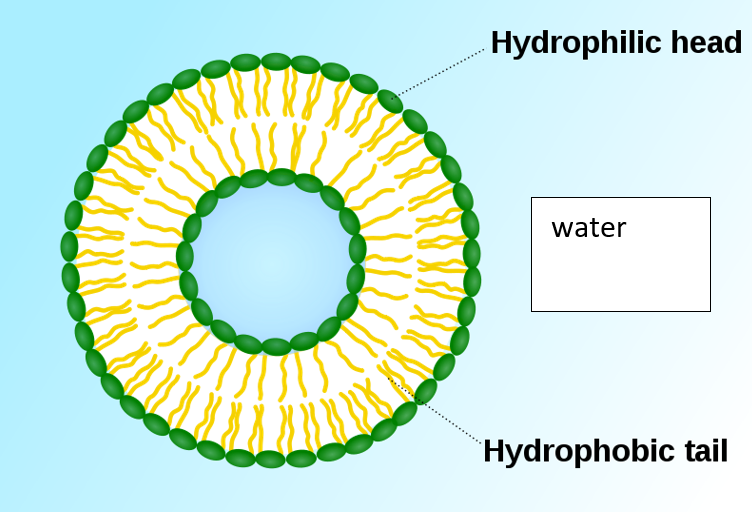Now that children from 5 to 11 years old are eligible to receive COVID vaccines, many people are wondering again about exactly how they work. You may have heard that both Moderna and Pfizer make mRNA vaccines (more on that in a minute). But the vaccines would not be effective with mRNA alone. Another significant part of these vaccines is lipid nanoparticles. So why is this nanotechnology so important for vaccines?

What is mRNA?
There are three types of molecules that carry genetic information in cells: DNA, RNA and proteins. DNA is stored in the cell nucleus.

A special type of RNA called messenger RNA (mRNA) carries the genetic information from DNA to other parts of the cell, where is it is used as instructions for making proteins. This process is known as the central dogma, meaning it is a foundational concept in our understanding of how genes work.

How do COVID vaccines use mRNA?
The mRNA in a COVID vaccine gives instructions to our cells to make one harmless piece of a protein from the COVID virus. Our immune system recognizes that these spike proteins don’t belong in our body, and learns to make antibodies to get rid of them. That way, if and when our body encounters the real COVID virus, our immune system has already learned how to fight it off. Here’s a fun explanation video by Vick Krishna.
One of the most important challenges for an mRNA vaccine is that it only works if it can get inside our cells. But the cell membrane includes a hydrophobic layer (meaning “afraid of water”) that does not allow mRNA to penetrate. That’s where lipid nanoparticles come in: the lipid nanoparticle is also hydrophobic, which helps the mRNA to get through the cell membrane.
More on lipid nanoparticles
The earliest discoveries of lipid nanoparticles can be traced back to the 1980s. Professor Pieter Cullis of the University of British Columbia found that anti-cancer drugs could be delivered with the help of liposomes (small bubbles inside cells formed by spheres of lipid membranes). 1

The shell of a liposome is made of a double layer of lipids similar to the membrane of a cell – this shell helps the liposome to get through the cell membrane. Observing how simple liposomes could travel through cell membranes inspired Professor Cullis and other scientists. They wondered if better structures could be artificially designed to transport drugs, but there was another challenge to face before lipid nanoparticles could be used to make mRNA vaccines for humans. 2

The challenge for getting mRNA vaccines to work is the charge of the molecules. Because mRNA is negatively charged, we want the lipid molecule to carry positive charges so it can bind with mRNA and form a stable nanoparticle. We also want the injected lipid nanoparticles to be neutrally charged overall so they won’t be harmful inside our body. Scientists have designed the lipid molecules in lipid nanoparticles so their charges can be adjusted by changing pH: when they’re made in lower pH (more acid), they carry positive charges to bind with mRNA. But the pH inside our bodies is about 7.4 (more basic), so after injection the lipid molecules are no longer charged even after the mRNA are dissociated from them.
Another important scientist, Dr. Katalin Kariko, contributed to the design of mRNA. You can read more of her story here.
What are lipid nanoparticles good for (other than vaccines)?
Lipid nanoparticles can do a lot more than just deliver mRNA. They can also deliver other large molecules into cells.3 This brings opportunities for cancer treatment, gene therapy, and a lot of related biomedical research. Hopefully in the future lipid nanoparticles can bring more breakthroughs in medical science.
REFERENCES
- Ostro, M. & Cullis, P. Use of liposomes as injectable-drug delivery systems. American Journal of Health-System Pharmacy. 1989, 46 (8): 1576-1588. DOI: 10.1093/AJHP/46.8.1576
- Cross, Ryan. Without these lipid shells, there would be no mRNA vaccines for COVID-19. 2021. Chemical & Engineering News. 2021, 9(8). Retrieved from https://cen.acs.org/pharmaceuticals/drug-delivery/Without-lipid-shells-mRNA-vaccines/99/i8
- Tenchov, et al. Lipid nanoparticles—from liposomes to mRNA vaccine delivery, a landscape of research diversity and advancement. ACS Nano. 2021. DOI: 10.1021/acsnano.1c04996.
